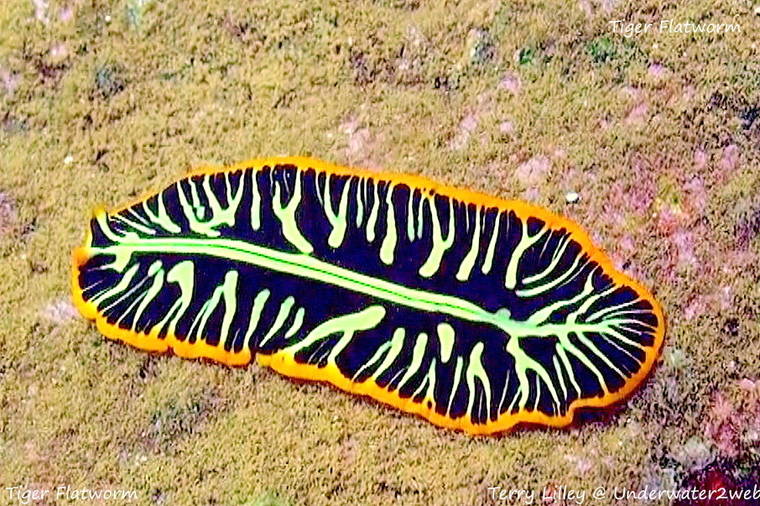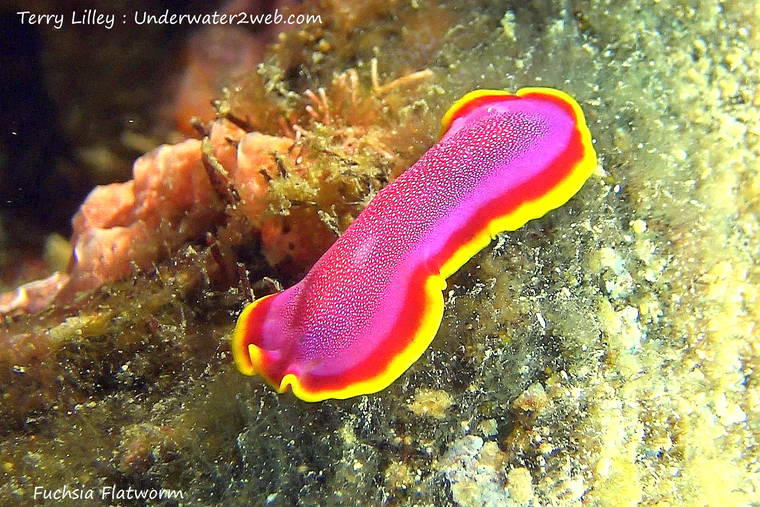Meet one of Hawai‘i’s most ancient creatures: The free-living marine poly-clad flatworm.
These extremely colorful. two-inch-long creatures live on our coral reefs in shallow, calm waters. They just may be one of the very first creatures to evolve on our coral reefs even before the land appeared above the sea surface. The free-living flatworms are related to human tapeworms and flukes that live their entire lives inside other animals.
The coral-reef flatworms may have been the first animals to develop bilateral symmetry, where the left side of their bodies is a mirror image of the right side of their bodies. If you cut one of these worms in half lengthwise they will grow back the opposite half and still live.
These worms have a head and tail with no body cavity, and a mouth that also serves as an anus. They do not have eyes, but they have sensory tentacles for finding their way around the reef and detecting food. These worms are often mistaken for the small, colorful nudibranchs, but they do not have external gills and they breathe through their skin.
The first time I saw one of these brightly colored creatures it was free swimming through the sea water and just did not look real with its amazing, bright colors shining in the sunlight as it danced on by. As with most small, colorful marine creatures, the flatworm has toxic skin, which keeps it from being eaten by fish and other reef predators.
Poly-clad flatworms are hermaphroditic, which means they have both male and female sex organs. These small, harmless-looking creatures are also carnivores, feeding on many types of small marine reef creatures.
Very little is known about these secretive creatures, as they usually live in dark cracks and caves where they cannot be observed, and are often nocturnal. We may even have several unknown species here in Hawai‘i, as many have yet to be described by scientists.
As far as I know these tiny reef creatures do not even have a Hawaiian name, because more than likely in old Hawai‘i no one ever saw one.
You can see the free-living, poly-clad flatworms in action up on the underwater educational web page underwater2web.com in the movie “The World’s Guide to Hawaiian Reef Creatures.”
•••
Terry Lilley, a marine biologist, lives in Hanalei. His websites include underwater-2web.com and www.gofundme.com/5urrm4zw.



